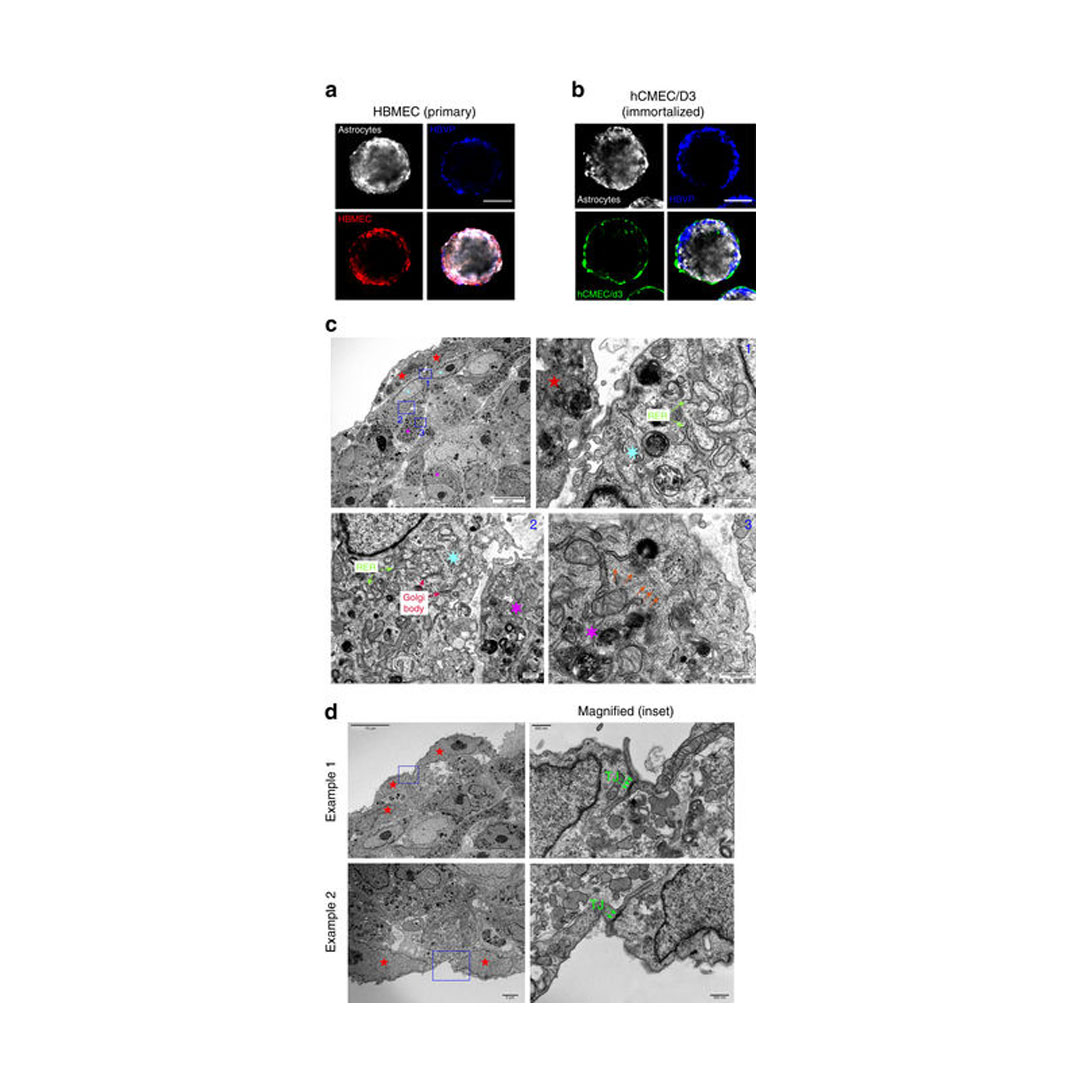
Blood-brain-barrier spheroids as an in vitro screening platform for brain-penetrating agents

Blood-brain-barrier spheroids as an in vitro screening platform for brain-penetrating agents
Nature Communications (2017)
DOI:10.1038/ncomms15623
Received: 22 September 2016
Accepted: 07 April 2017
Published online: 06 June 2017
Updated online 13 July 2017
Authors: Choi-Fong Cho, Justin M. Wolfe, Colin M. Fadzen, David Calligaris, Kalvis Hornburg, E. Antonio Chiocca, Nathalie Y. R. Agar, Bradley L. Pentelute & Sean E. Lawler
Abstract
Culture-based blood–brain barrier (BBB) models are crucial tools to enable rapid screening of brain-penetrating drugs. However, reproducibility of in vitro barrier properties and permeability remain as major challenges. Here, we report that self-assembling multicellular BBB spheroids display reproducible BBB features and functions. The spheroid core is comprised mainly of astrocytes, while brain endothelial cells and pericytes encase the surface, acting as a barrier that regulates transport of molecules. The spheroid surface exhibits high expression of tight junction proteins, VEGF-dependent permeability, efflux pump activity and receptor-mediated transcytosis of angiopep-2. In contrast, the transwell co-culture system displays comparatively low levels of BBB regulatory proteins, and is unable to discriminate between the transport of angiopep-2 and a control peptide. Finally, we have utilized the BBB spheroids to screen and identify BBB-penetrant cell-penetrating peptides (CPPs). This robust in vitro BBB model could serve as a valuable next-generation platform for expediting the development of CNS therapeutics.



